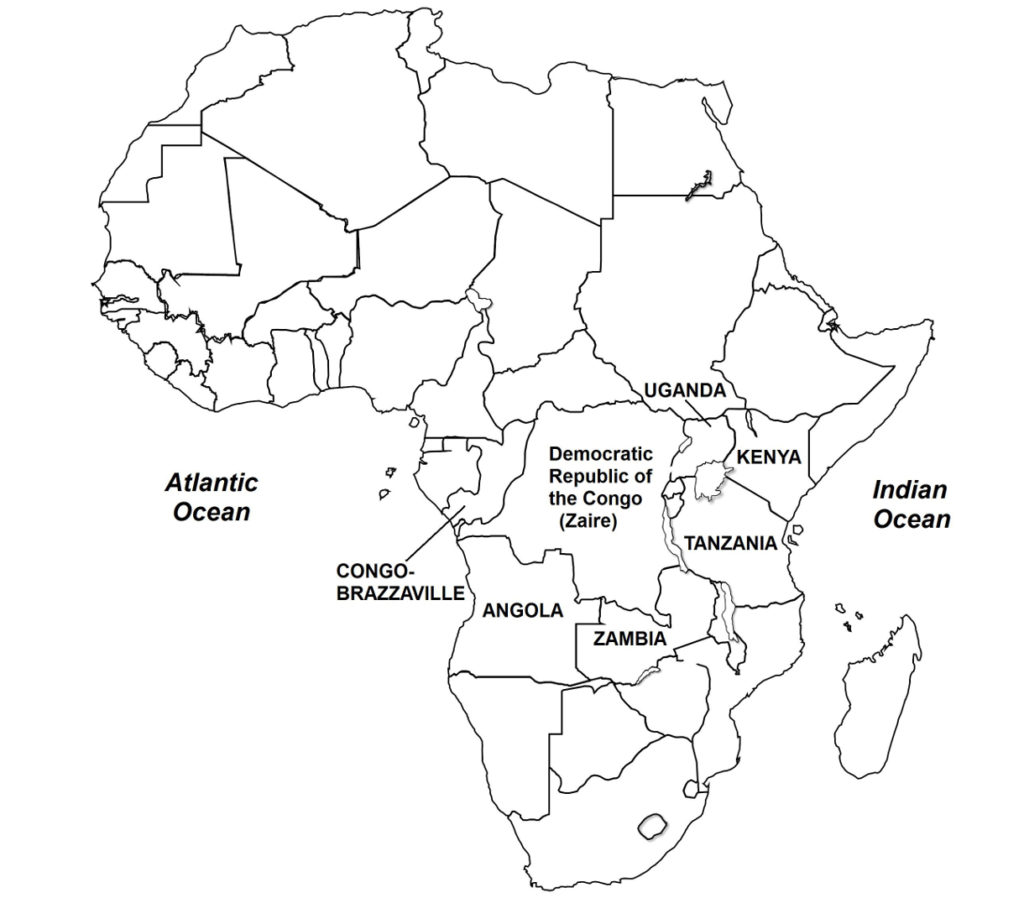On August 30, 1998, forces of the Democratic Republic of Congo (DRC), together with their Angolan and Zimbabwean allies, recaptured the town of Matadi from Rwandan forces and the Rally for Congolese Democracy (RCD) militia during the ongoing Second Congo War.
(Taken from Second Congo War – Wars of the 20th Century – Volume 1)

By this time, Angolan forces also had come to the aid of Democratic Republic of the Cong (DRC) President Kabila’s beleaguered regime, entering through the Angolan province of Cabinda. The Angolans took control of the Congo’s western region, including liberating the towns of Matadi and Kitona, and moved eastward to meet up with the Zimbabwean Army in Kinshasa. More Zimbabwean forces began pouring in via Zambia into southern Congo, with the aim of securing Mbuji-Mayi, a diamond-rich mining town in Kasai-Oriental Province. With military forces from Namibia deploying in the western Congo and those from Chad entering through the north, both in support of the Congolese government, and Burundi, backing the invaders, the conflict threatened to expand into a full-blown multinational war (in fact, the war has been called “Africa’s World War”).
With Kinshasa secure by early September, the Angola-Zimbabwe-Congo coalition made plans to launch an offensive into rebel-held territories further east. Rwanda and Uganda had recruited extensively – some 100,000 new soldiers were brought to the frontlines, greatly overmatching in numbers the combined Angolan-Zimbabwean forces (the latter, however, consisted mainly of elite combat units). Both sides of the conflict also increased the strength of their battle tanks, armored vehicles, artillery, and warplanes.
In the following months, a number of indecisive battles took place, as each side tried to expand its control in northern Katanga Province and in central Congo. In northern Congo, the Ugandan Army organized the Movement for the Liberation of the Congo, a proxy militia, to serve as its advance force in its offensive into northeast Congo.
Background of the Second Congo War The First Congo War (previous article) ended when Laurent-Désiré Kabila took over power in Zaire. He formed a new government and named himself the country’s president. He renamed the country the “Democratic Republic of the Congo”. President Kabila faced enormous problems: the country’s infrastructure was in ruins partly because of the war but mainly because of neglect by the previous regime; the economy was devastated; and most of the people lived in poverty.
And these were the least of President Kabila’s problems. He was most concerned about his tenuous hold on power. He had merged his rebel forces with the Rwandan Army, which produced tensions between the two former enemies. Furthermore, some military officers remained loyal to ex-President Mobutu Sese Seko, the deposed tyrant.
To consolidate power, President Kabila set up an authoritarian regime, centralized power, and appointed relatives and friends to top government positions. His administration was accused of nepotism, abuse of power, and corruption, and President Kabila’s critics drew similarities between his government and the former regime – implying that nothing had changed.
More crucial image-wise for President Kabila was the ubiquitous presence in the Congo of foreign troops, particularly those from Rwanda and Uganda; these countries had helped him win the First Congo War. The Congolese people perceived the foreign armies as holding real power in the country, with President Kabila merely acting as a figurehead. For this reason, on July 14, 1998, President Kabila sacked his Armed Forces chief of staff, a Rwandan, an act that began a chain of events that led to the Second Congo War.
On July 27, President Kabila ordered the Rwandan and Ugandan Armies to leave the country. A week later, he terminated the appointments of all Tutsi public officials. The Congolese people regarded the Tutsis as foreigners, despite the fact that Banyamulenge Tutsis were long established in the Congo’s eastern provinces.
As a result of President Kabila’s edict, Uganda pulled out its forces from the Congo. The Rwandan government also ordered its forces to withdraw, not out of the Congo, but to the remote, weakly defended Kivu Provinces in eastern Congo. Rwanda believed that its security concerns – the main reason for its involvement in the First Congo War – had not been fully met. In particular, the Rwandan government noted that the Hutu militias had reorganized and once again were carrying out raids into Rwanda. Furthermore, the Banyamulenge Tutsis, who had formed an alliance with Rwanda during the First Congo War, requested the Rwandans to remain in the Kivu Provinces. The Banyamulenge’s citizenship had been revoked by a new law, and the Congolese government ordered them to leave the country.
Rwanda and Uganda organized the Banyamulenge into a proxy militia called the “Rally for Congolese Democracy”, or RCD, whose aim was to overthrow President Kabila. As in the First Congo War, Rwanda and Uganda used a proxy force to fight their wars, as direct intervention by their armies was a violation of international law.
